21st Century Greats: Tiger Woods
It’s Masters weekend and it wouldn’t be right if we didn’t celebrate the career of one of the greatest players of all time.
Over the course of the year, I will be posting biographies of 25 modern sporting greats to celebrate being a quarter way through the 21st Century. As usual, these posts will combine a summary of some of their sporting achievements mixed with my own memories of watching them. There is no order to the list, just a celebration of fantastic sportspeople.
21st Century Greats: Tiger Woods
This weekend sees the conclusion of the Masters at Augusta. Each year our TV screens are filled with beautiful magnolias, magnificent greenery and hordes of patrons placing their chairs in just the right spot. The sights and sounds are like no other golf course but of course it’s really all about the players. There have been many winners over the years but for my generation, Augusta always brings memories of one man in particular - Eldrick ‘Tiger’ Woods.
Tiger Woods may have started to win majors in the 90s (starting with the Masters on his professional debut there in 1997) but it was in the 21st Century that he truly cemented his legacy. He may not always have been in the news for the best reasons but when he is at his best there really is no questioning his game. There is an argument to be made that he is quite simply the best to have ever played the game to this point.
By the turn of the century, Tiger had already added the USPGA in 1999 to his Masters title. He had also already been the world number 1 for a combined total of 90 weeks. Most recently, he had regained that title on August 16th 1999 and would hold it until August 30th 2004. This run of 263 weeks seemed at the time like it could never be beaten, until that is Tiger went and beat it himself, holding the number 1 spot again for 280 consecutive weeks between June 2005 and October 2010. Consistency is one of the key factors that made him so great.
Tiger didn’t win the first major of the 21st Century, eventually finishing 5th behind Vijay Singh at the Masters, but in reality he was just warming up. Tiger had recently won six PGA Tour events in a row through the end of 1999 and into 2000 to show that he could put a streak together when his form was in. What happened over the course of the next three majors of the year 2000 though was absolute brilliance.
Pebble Beach was the host of the US Open in June and the course had been designed to be tough, having been lengthened to 6,846 yards (the longest it had ever been). This was paired with absolutely brutal conditions including wind and fog that meant that finding low scores was extremely difficult. Difficult for everyone except Tiger that is, who somehow found his way through all of the challenges to excel.
He set out his stall with a 6-under par 65 on the first day and then led the whole way while others just seemed to fall away from him. Tiger showed his class and brilliance in eventually finishing on 12-under par, the only player to break even for the tournament, and an incredible 15 shots clear of Miguel Angel Jiminez and Ernie Els who tied for second place. It has been called the greatest ever performance in a major and it is easy to see why.
A month later the players gathered again for the Open Championship at the ‘home of golf’, the Old Course at St Andrews. Again, Tiger was imperious, shooting 5-under par to get himself within a shot of the lead on the first day and then recording three more rounds under par to eventually win by eight shots. His total of 19-under park was the lowest ever shot for a major tournament to that point and wouldn’t be beaten until Jason Day won the USPGA with -20 fifteen years later.
In winning the Open Championship, Tiger also became the youngest ever player to win the Career Grand Slam (all four major tournaments) at the age of 24. This is two years younger than when it had been done by the great Jack Nicklaus and remains as the record to this day. Tiger still had bigger things on his mind though.
That August, the USPGA would be held for the second time at Valhalla in Louisville, Kentucky. Tiger was defending his title from the previous year and again made it incredibly difficult for the rest by shooting each round under par. However, this time someone was good enough to stay with him, as Bob May also managed to finish on 18-under after three consecutive rounds of 66.
The tournament would be decided in a three hole playoff. It would have been easy for Woods to fold under the pressure, being properly challenged whilst in contention for a major for the first time. Instead, however, he showed his strength birdieing the first playoff hole and never looking back. He was somewhat fortuitous with his lie after driving into the trees on the final hole but held on to win by one stroke. It was the first time since Ben Hogan in 1953 that a player had won three majors in a row and the first time since 1937 that someone had defended the USPGA.
Over the course of the year 2000, Woods won 9 tournaments, including the three majors, and finished in the top five in 17 of the 20 tournaments that he entered. He broke the record for the lowest scoring average in tour history and earned over $10 million in prize money. Even if this had been the only year that he played on the tour, Tiger would probably have gone down as a great, but he was nowhere near satisfied with just that.
By contrast, his record the next year of 5 wins with one being in a major looked rather average although it would be an exceptional year by anyone else’s standards. The one major in question though was the one that really mattered as it was the first of the year, the Masters, and meant that at that time, Tiger held all four of the majors at once. He remains the only player to have achieved this feat. Bobby Jones had won all four major events in one year in 1930 but the structure was very different then.
At Augusta in 2001, Woods had to fight from behind. Compatriot Chris DiMarco had set the early pace over the first few days but Tiger chipped away and by the end of Day 3 he found himself in the familiar position of first. David Duval made a bit of a charge on the last day and tied the lead for a while but eventually dropped back and Woods won by two clear shots.
Woods would continue to be consistent, winning at least 5 events each year through 2003 and adding a third US Masters and a second US Open to his major count in 2002. He didn’t win a major in either 2003 or 2004 though and also lost his world number 1 ranking. Much of this can be put down to knee problems which led to surgery and Woods having to restyle his swing.
He roared back to life in 2005 and went on to win another six major tournaments over the course of the next four years. The first of these was the Masters once more and featured one of the greatest golf shots that I, and perhaps many others, have ever seen.
Wearing his traditional Sunday red, Woods had battled back from a slow start to the week to lead Chris DiMarco (going well in the Masters again) by one on the 16th tee. However, Tiger hooked his tee shot to the left of the green, ending up just inside the rough. The shot he had left himself was horrible, compounded by DiMarco having landed in the middle of the green. Woods weighed up his options carefully before deciding to chip it.
Due to the curvature and slope of the green, Tiger chipped the ball what must have been around 20-feet to the left of the pin. To the uninitiated it looked like he was just aiming to get it onto the putting surface and go somewhere close. However nature, and some spin, took hold and the ball began to trickle down the slope towards the hole. As it got closer, the whole patron’s gallery, and the millions at home, held their breath as one. Time seemed to stand still as the ball got to the lip of the hole and then paused, teasing that it would stay out. After what seemed like an eternity, it finally took one final roll, disappearing into the cup and sending the crowd, Woods and his caddy wild.
Following that shot, it didn’t even really seem to matter that Tiger blew his two shot lead and let DiMarco back in for a playoff. We all knew he would eventually win, and he did. It was one of those truly magical Tiger moments that have helped to cement his legacy alongside the many tournaments that he had won.
Another moment like this was at the US Open at Torrey Pines in San Diego, California in 2008. Woods had been ravaged by knee trouble and was severely underprepared and lacking practice but somehow battled through the tournament to tie Rocco Mediate for the lead at the end of Sunday. In other tournaments this would mean an average playoff over a few holes or even a single hole shootout but not at the US Open at this time. Both players would need to come back the next day to play another 18 holes against one another.
This is the last thing that the struggling Tiger needed but he battled manfully, the lead swinging back and forth before they reached the 18th green and again couldn’t be separated. This time they would play sudden death and this time the old Woods mettle shone through once more, finding enough for a par while Mediate bogeyed to lose. The victory was enhanced even further by the fact that only two days after the tournament, Woods announced that his injuries were so bad that he would have to take the rest of the year off. At that point he was on 14 major victories, only 4 behind Jack Nicklaus’ record, but what he didn’t know was just how long he would have to wait for his next one.
Woods returned in 2009, winning six tournaments (no majors) but by the year’s end, everything would start to unravel. Early in the morning after Thanksgiving, footage shows that Woods sped out of his driveway in his car, went over kerbs, crossed a central reservation and hit a fire hydrant before crashing into a neighbours tree. His wife at the time, Elin Nordegren, had discovered that he had been having an affair. She had also smashed the back windscreen with golf clubs.
In the months that followed, it transpired that Woods had not only cheated the one time, with several women coming forward, and also that he was increasingly reliant on painkillers and sleeping pills just to get by. His image was severely tarnished and, safe to say, his mind was not on his game. He was forced to make a public apology, said he was taking some time away from the game, and began to rebuild as best as he could.
Over the next decade, Tiger was still very successful on tour, winning a number of events and even returning to world number 1 for a period in 2013. However, the fallout from the scandal, mixed with continuing knee and back problems and surgeries meant that he struggled to find any consistent form. He still came close in majors, but the aura and presence that he had always held was somewhat gone.
An arrest for driving under the influence (DUI) in May 2017 could have been the end for Woods but actually it proved to be a turning point. He got himself clean and focused on his game, building up his competitiveness again. He came close to winning the Open and the USPGA the following year and then won the end of season championships. Support began to gather and all was once again building to another one of those Tiger moments at the place with which he is perhaps most synonymous, Augusta National.
Due to those improved performances in 2018, by the time the 2019 Masters came around, Woods was being talked about as one of the favourites again. Tiger eased himself into the tournament on the first day by recording a 2-under par round and put himself within one shot of the lead on the Friday by reaching 6-under. Others began to fall away on Saturday but Tiger went 5-under to finish 11 shots below par, level with Tony Finau in second behind Francesco Molinari on 13-under.
If Woods was going to win, he was going to have to do it at a major for the first time where he wasn’t leading after 54 holes. On the last day, Molinari continued to lead but the field began to bunch behind him and as the final group reached the 15th, six players including himself and Woods were level on 12-under par. The Italian had been in the water on the 12th and did so again here. Woods birdied the hole to lead by one.
This led them to the 16th, site of that famous moment 14 years previously when Tiger had last won. On this occasion he produced another wondrous shot but this time it wasn’t a chip, it was his tee shot, which landed on the green, curled towards the hole and very nearly went in, leaving him a simple tap in for another birdie to double his lead. All he needed to do was keep his cool and he did so by finishing with a par and a bogey to win by one. The Augusta crowd went wild and even the usually restrained Tiger showed the emotion that he was feeling to finally achieve major success again.
The victory was one of sport’s most incredible comebacks, putting Woods back on top of the world of golf after 11 years without a major victory. He edged one closer to Nicklaus’ record and became the 11th oldest player to win a major. Supporters all around the world celebrated the moment and recognised what the player had come through in order to reach the pinnacle again.
Since that point, Woods has only completed in 22 other events, winning one, and it looks like Nicklaus’ 18 major victories is safe, at least until another phenom comes along. Tiger has played even less since a major car crash in 2021 and is currently trying to overcome another injury, this time a ruptured Achilles.
Tiger Woods is not a perfect person but his sporting achievements cannot be judged against what has happened in his personal life. In breaking through and dominating the sport for the first decade or so of his career he propelled the sport of golf further into the worldwide conscience than perhaps ever before. Tiger was a global megastar, festooned with sponsorship deals and lauded wherever he went.
Although he was not always the best team player (his Ryder Cup record is average at best), his 15 major wins sit as the second most of all time to this point. He changed the perception of what a man of colour could achieve in the world of golf and inspired hordes of future stars. There is no doubt whatsoever that he is one of the greatest sports stars of the 21st Century.
Notable Achievements:
15-time major winner (13 in 21st Century)
Holder of all major titles at once ‘Tiger Slam’ 2000-01
10-time PGA Tour money list winner
11-time PGA Tour player of the year
110 professional wins
82 PGA Tour wins (tied 1st all time with Sam Snead)

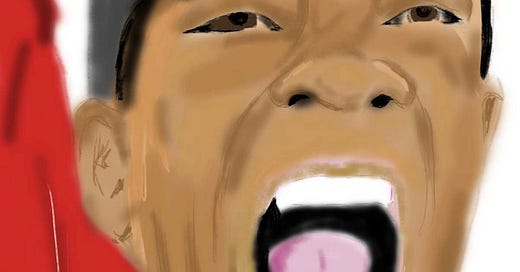



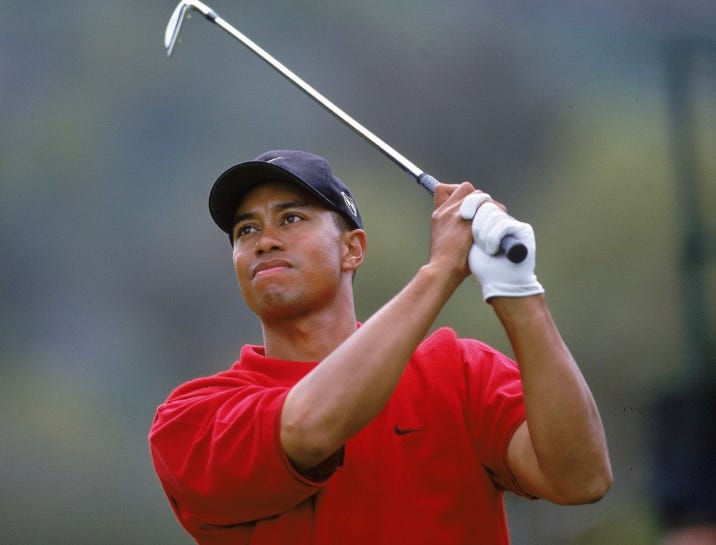
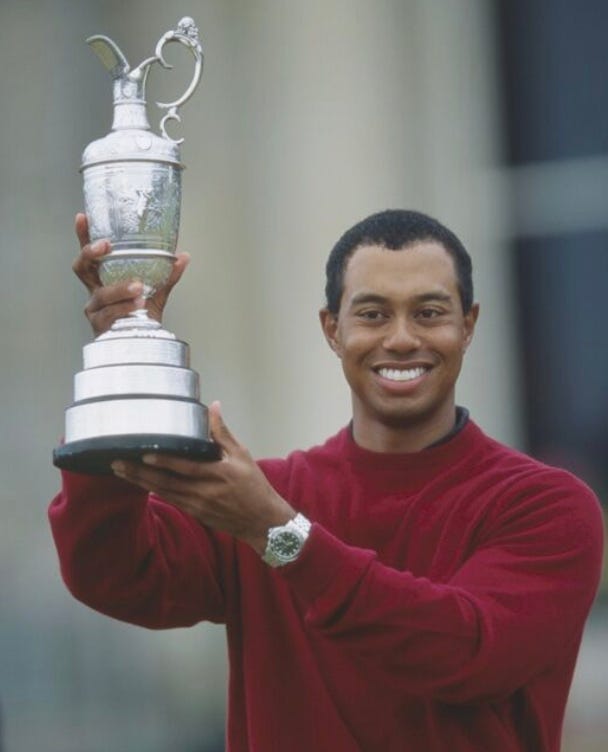
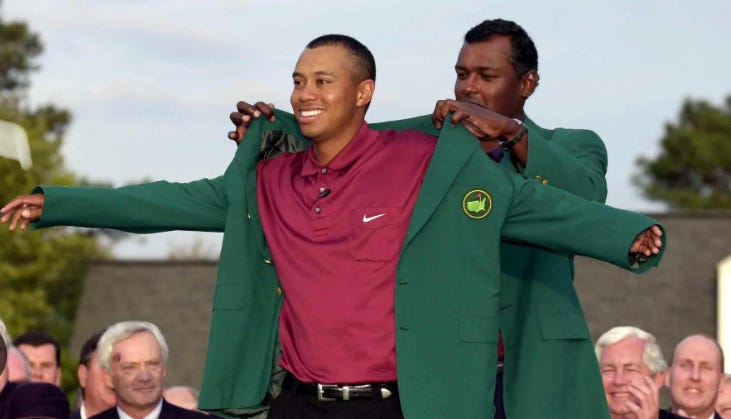


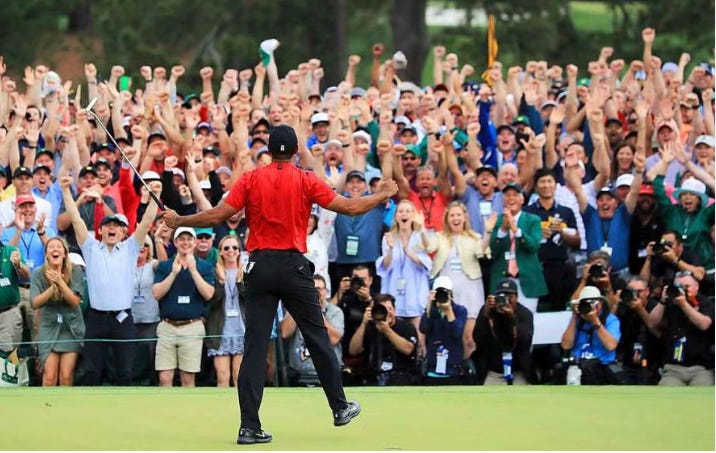
Great blog Sam. Very appropriate on this Masters weekend. I was excitedly emotional watching the video clip of 'Tiger' holing that put. Amazing. Close finish, I think, for this year's Masters. Mcllroy closing the gap. I hope he wins.
Thanks. BFF
As a somewhat perfunctory golf follower, this latest of your sports assessments is again quality Sam, I look forward to nexts year’s Masters on the telly😃 Super article of a phenomenal talent but not sugar coated. Genek